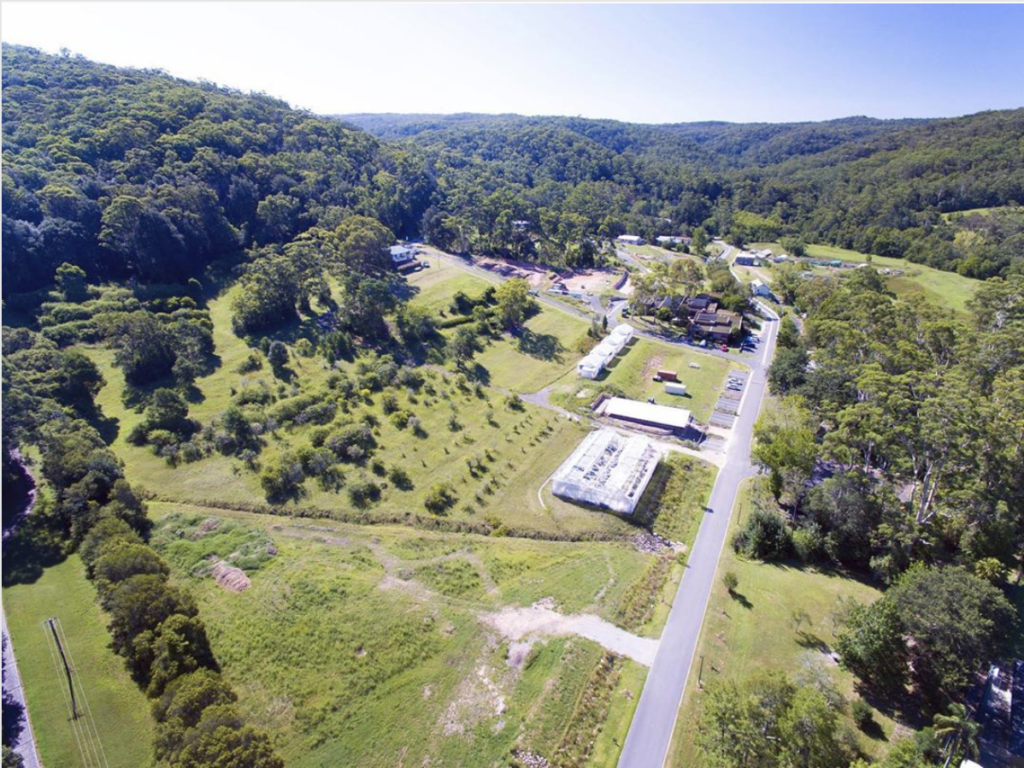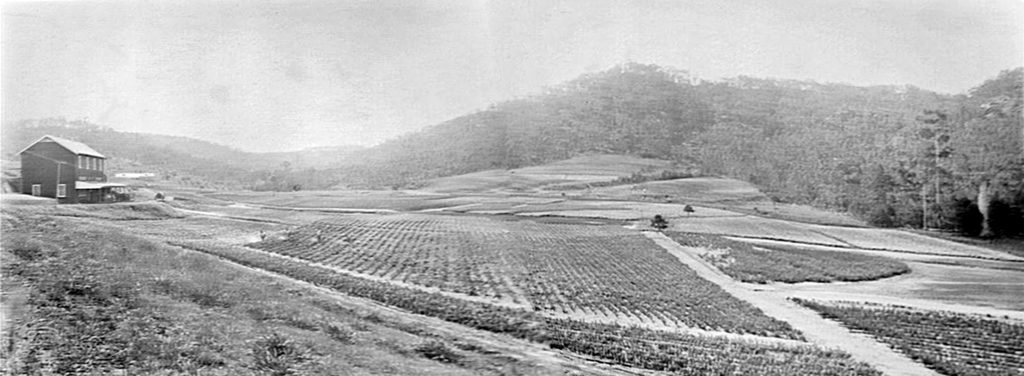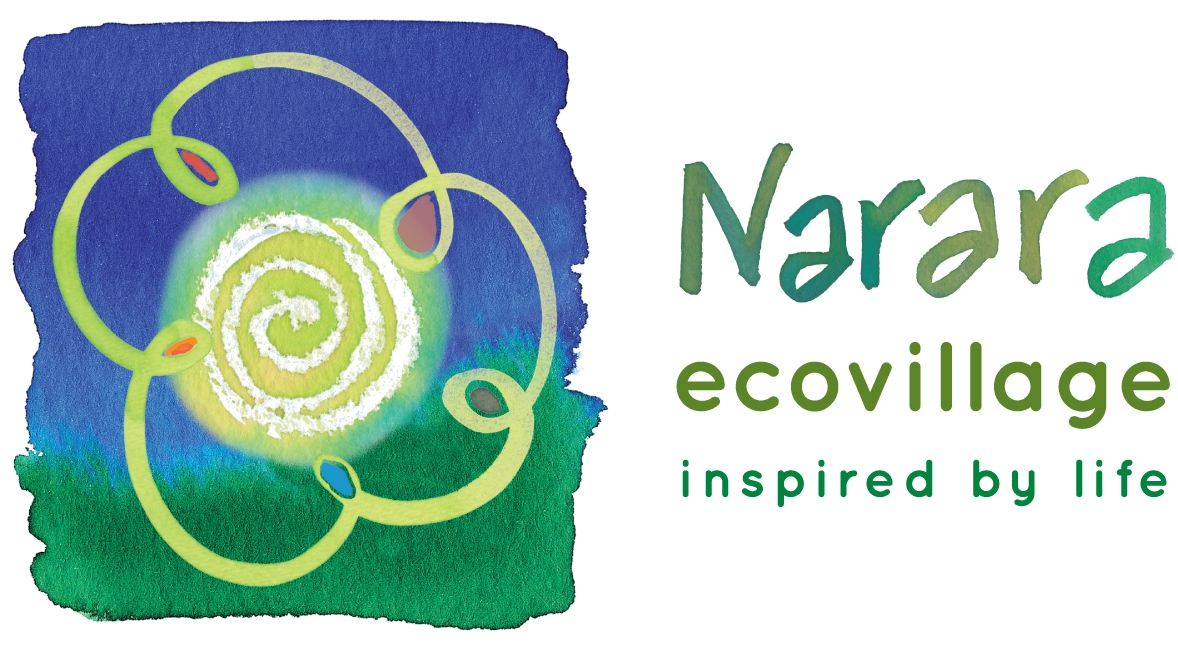 This extraordinary bushland setting is nestled in the Narara Valley, on the Central Coast of NSW, Australia. We are about an hour’s drive north from the outskirts of Sydney.
This extraordinary bushland setting is nestled in the Narara Valley, on the Central Coast of NSW, Australia. We are about an hour’s drive north from the outskirts of Sydney.
Comprising 64 hectares, the property has an existing dam, a creek and an abundance of beautiful views. The land is bordered on three sides by the award-winning Strickland State Forest. Approximately 12 hectares of the land is zoned for residential development with another 12 hectares available for agriculture and community gardens. The remaining hectares of native forest and bushland are dedicated to conservation. The image on the right is an aerial view when we purchased the site, before any new building started.
The site is about 30 minutes from local beaches at Terrigal and Avoca, has local bus access, is a twenty minute walk to Narara station on the main Sydney-Newcastle rail line, about 75 minutes from Sydney Central, and is within easy reach of local schools, shops, retail and commercial facilities.
Conservation
Two thirds of the Ecovillage property is zoned as conservation forest (E2) where a number of Endangered Ecological Communities (EEC) and rare and/or endangered plant species are present. Narara Ecovillage is committed to preserving this environmental heritage and natural ecosystems and to do as much as possible to minimise human impact to these high value conservation areas.
History – Rich in Heritage.
For a 100 years the site was the home of the Gosford Horticultural Institute and there are over 50 existing structures and buildings, including greenhouses, outbuilding and workshops that are perfect for food production and cottage industries. There are residential dwellings, offices and other buildings ideally suited for community facilities. Some of the buildings and trees are heritage listed providing further interest on the site, and of course before this the land had a rich indigenous history, which is very important to us as a community.

Agriculture
Many of our members are already living at the village or live close by, and are actively involved in maintaining and developing the agriculture infrastructure and undertaking agricultural projects, including:
- Mixed fruit and nut orchards
- Community gardens
- Seedling propagation
- Chooks
- Beehives
The village today
Road names
Gugandi Road. Research Road leads up to the village – because it was originally the Research Institute. As you cross through the original gates, now re-signed as Narara Ecovillage, the name of the road changes to become Gugandi Road. Gugandi is a local aboriginal nane for the Laughing Kookaburra and there are always at least two Kookaburras to be seen if you walk along this spine road from the front gate to the Arboretum at the far end… and perhaps their ‘laughter’ reminds is not to take ourselves too seriously!
Boobook Rise. Half way to the village centre, a turn off to the left is called Bookbook Rise. Boobook is the name of a small Australasian owl found locally. Boobook Rise leads up to the Village Green.
Balgara Rise runs uphill from the administration buildings and the Village Hall. ‘Balgara’ is a local aboriginal word for ‘hill’. Balgara marks the mid point of the village, between ‘Northside’ and ‘Southside’.
Teabush Lane. Near the top of Balgara Rise is the entrance to the dimninutive Teabush Lane. The Tea bush (Camellia sinensis) is a species of evergreen shrub or small tree in the family of Theaceae flowering plants.
Syncarpia Crescent runs uphill from the west of the main entrance, marking the perimeter, around the western edge of the village below our treeline, and then descends steeply to meet Gugandi again at the North end of the village. Syncarpia is the genus for turpentine tree (Syncarpia glomulifera), the predominant forest tree on the property. A stand of these trees had to be removed to make way for this road.
Kintay Lane. Running parallel to Gugandi half way up the hill, connecting Syncarpia Crescent to Balgara Rise, is Kintay Lane. Kintay means ‘Happiness’ (ref: Language of Hunter River & Lake Macquarie). This fits perfectly with our Narara Ecovillage family and our community spirit, and indeed a number of our families live along Kintay Lane.
Learn more about our efforts in bush regeneration ›
Read about our evolving farm garden ›
